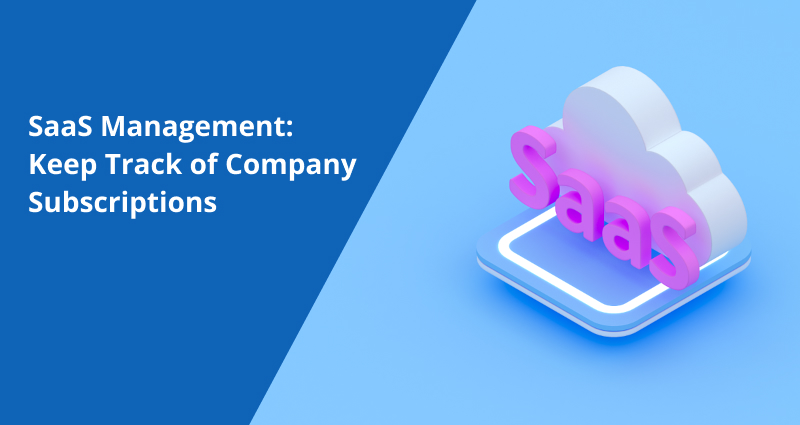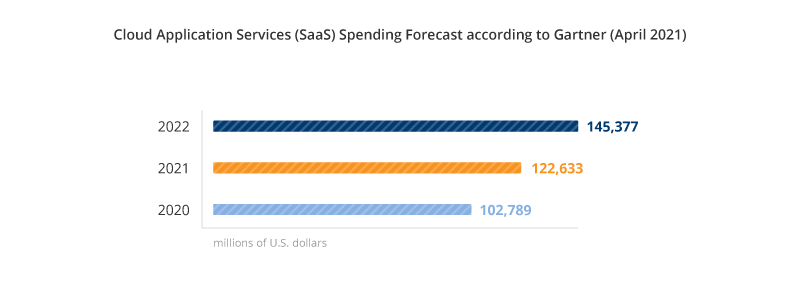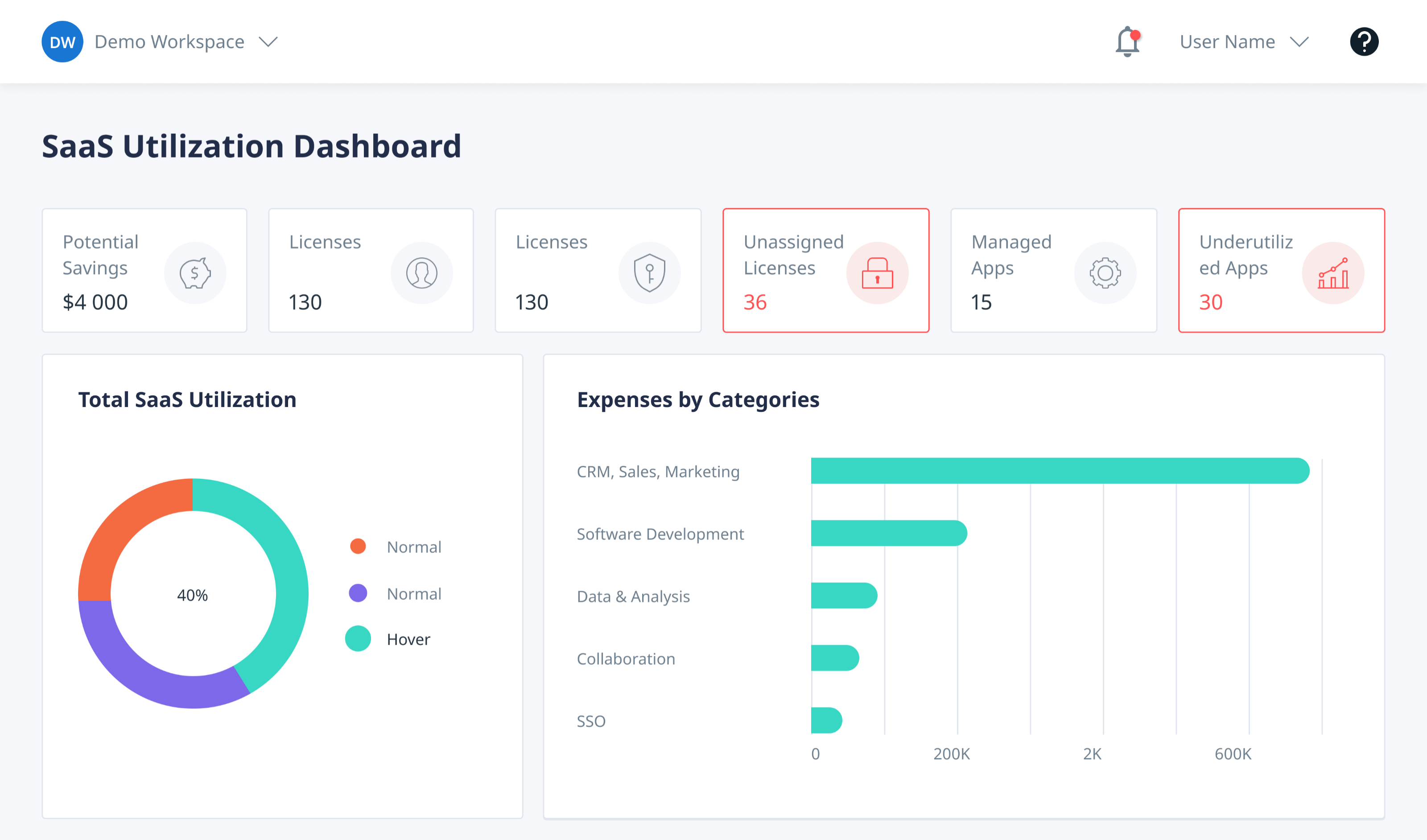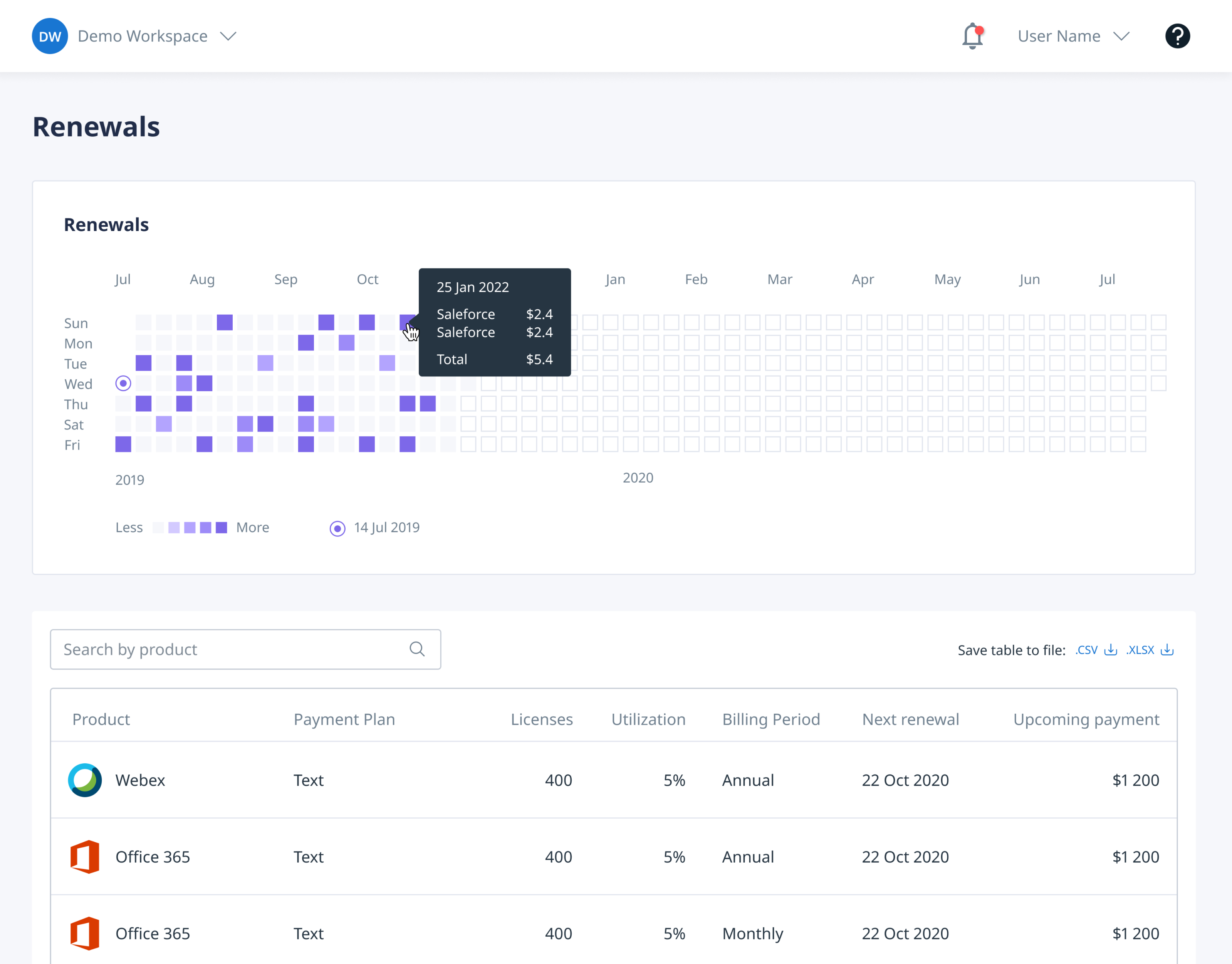SaaS Management: Keep Track of Company Subscriptions

Imagine a typical Monday morning in a medium-sized IT company: diligent workers arrive at the office after the weekend and dive into their daily routines while drinking coffee. To start with they open Slack channels, wondering if anything urgent requires their immediate attention. Then they check Jira to take an assigned task and start tracking time spent on closing it. While writing a new piece of code or fixing bugs, blocking issues appear and a Zoom call with a colleague working abroad is required.
No matter what task is given it requires a particular application.
According to research conducted by CIOdive, an average company deploys approximately 200 SaaS applications at once. Imagine how hard it can be to keep the balance between providing workers with all necessary SaaS tools and controlling the total SaaS spend. Well, it is surely hard but not impossible.
SaaS management can significantly facilitate these processes. Let’s discuss what problems can await the company without a proper SaaS management strategy and how exactly SaaS management can solve them.
Why manage SaaS licenses?
To begin with, SaaS services management can improve the company’s overall performance by means of solving problems connected to the SaaS portfolio.
There are 3 main issues that can negatively affect organizations with a large SaaS portfolio:
Increased spending
Software as a Service (SaaS) typically makes up 15-20% of the total IT budget and what is more – SaaS spending is constantly growing. According to Gartner’s research, SaaS cost is forecasted to reach $145.4 billion in 2022. So, cutting down SaaS spending helps not only stay within the IT budget.

With SaaS management, it’s easier to identify cost-driving apps and replace them with cheaper ones or cancel subscriptions, without complicating different departments’ work.
Unused resources
Almost every company at some point faces the issue connected to unused and underutilized applications and licenses. When there are so many different SaaS applications in the company, it’s not easy to keep track of all of them. Some of the licenses are hardly ever used and others are totally forgotten.
The main problem here lies in the misunderstanding of what SaaS applications and their licenses are necessary for each team in the company.
So, to make the most out of SaaS services, organizations should detect wasteful resources, eliminate them, and analyze the past utilization rates of previously deployed SaaS applications. This step helps to purchase the required amount of licenses in the future and choose those services that will definitely match the employees’ needs.
Security vulnerabilities
If employees use applications and services without explicit IT department approval, they can’t be sure that these resources are secure. So, such technologies, devices, or apps usage can introduce serious security risks, for instance: data leaks, unauthorized access to the company’s sensitive data, or compliance violations.
According to the RSA study, 63 percent of employees expose company sensitive data to networks when sending the documents to their personal email to work remotely. Some of the employees forget to log out from non-personal computers and put the company’s files in danger.
Due to using shadow IT resources, the risk of cyberattack significantly increases. However, organizations can minimize risk by means of educating staff members to be more serious concerning security and ensuring that the IT Department takes preventative measures to monitor and manage unsanctioned applications.
In this case, proper SaaS management provides transparency of all deployed SaaS applications among the company, as well as facilitates detecting suspicious applications, and getting rid of them before security and compliance issues occur.
In a nutshell, companies need to have a granular view of how employees are using the company’s SaaS applications.
How to reach visibility among numerous SaaS applications?
Back in the day, organizations used Google Sheet or Excel to gather the data and reach some semblance of visibility. Nowadays this approach is rather outdated.
Here is why: the management of SaaS licenses requires a lot of time and effort, including keeping track of applications’ utilization rates, their integrations with other SaaS tools, an overlap of applications with their counterparts, so the presence of SaaS management platforms on the market made organizations’ life easier.
With SaaS management tools, companies now have an opportunity to discover and monitor all purchased SaaS licenses together with their utilization rates and costs in one place.
Furthermore, SaaS subscription management software offer numerous possibilities to cut down SaaS spending and remain within the budget that the company set for the year.
Binadox solutions to easily manage SaaS licenses
Known for cloud services management and cloud cost optimization, Binadox also serves as a SaaS management platform.
Binadox users can get insights into SaaS applications usage and cost by observing SaaS Utilization Dashboard. It presents all the necessary information on total SaaS usage, as well as demonstrates expenses by categories.

Users have the opportunity to observe the potential savings of each app, as well as discover to which extent the SaaS tool is deployed and at what price. With this feature, business owners can analyze the value of each service, whether the company needs it or not.
Moreover, Binadox SaaS Utilization Dashboard facilitates the decision-making process concerning the number of licenses necessary for each department to keep productivity on a high level.
Additionally, the Binadox platform helps users easily identify underutilized and unused resources so that the companies could maximize their performance, eliminating unused but cost-driving licenses and investing in development and innovations instead.
Another helpful feature is Renewals Calendar. It displays when the next payment comes for each used SaaS application. So, business owners can be aware of the nearest renewal date before the next billing cycle begins.

To sum up
Once you’ve reached greater SaaS usage transparency and found a way to easily monitor costs, you can effortlessly manage SaaS licenses.
As you accomplished this task, your company can:
Sign up for a free trial today and explore all the cost-saving opportunities for your SaaS portfolio.